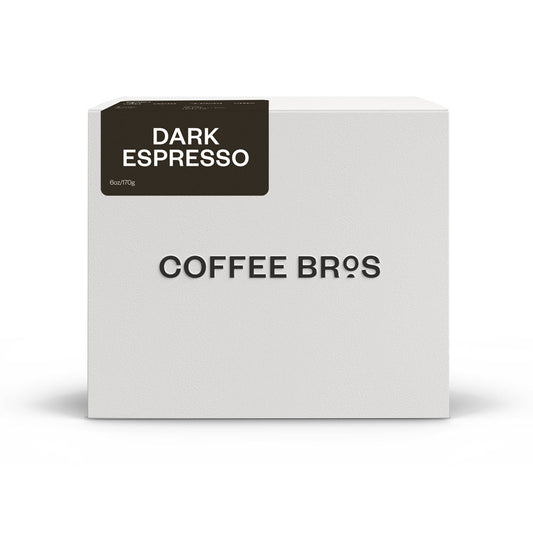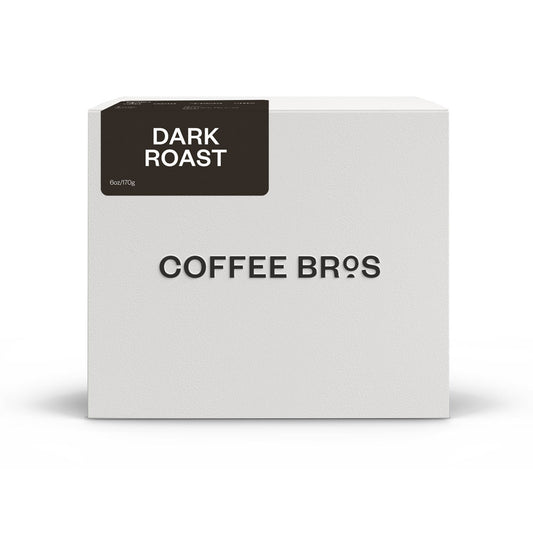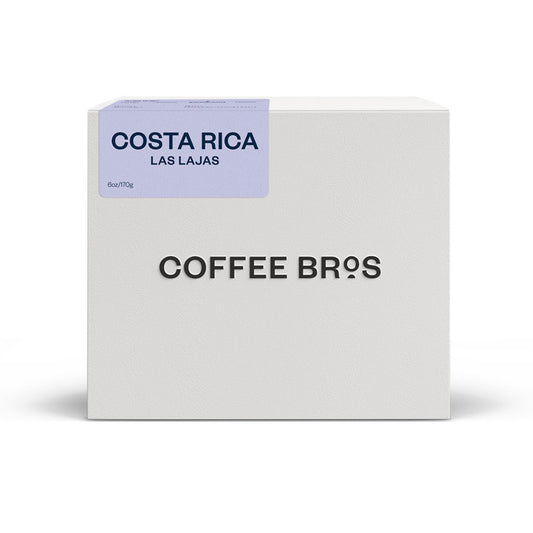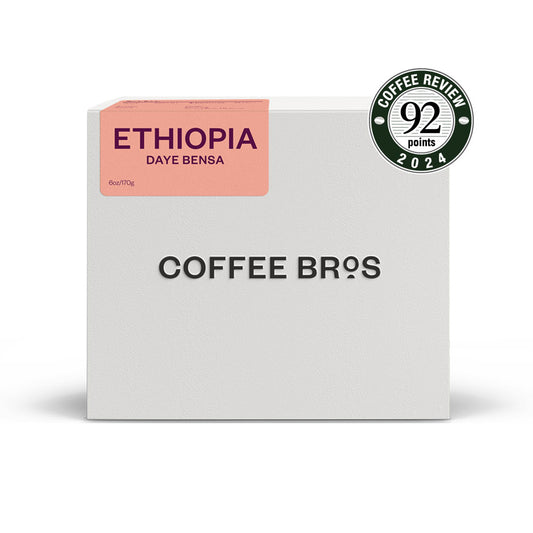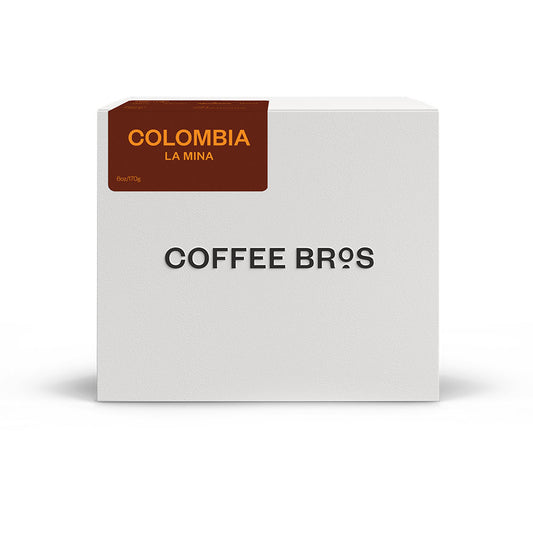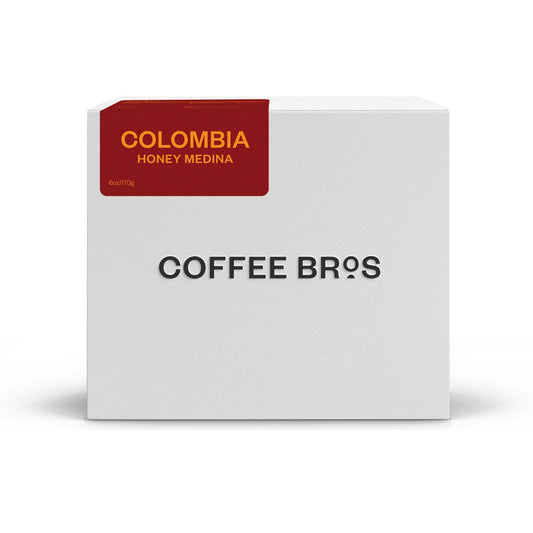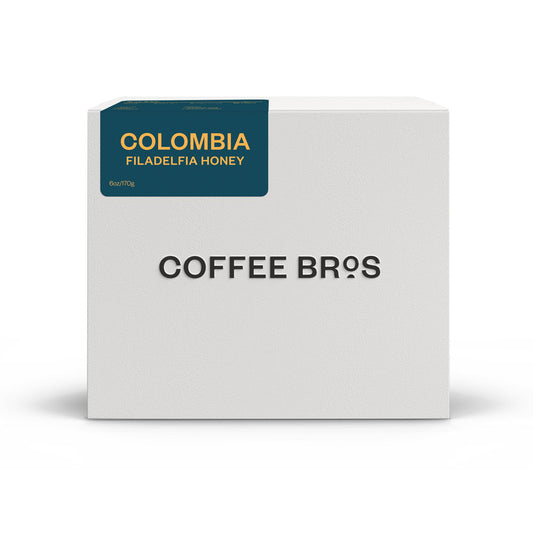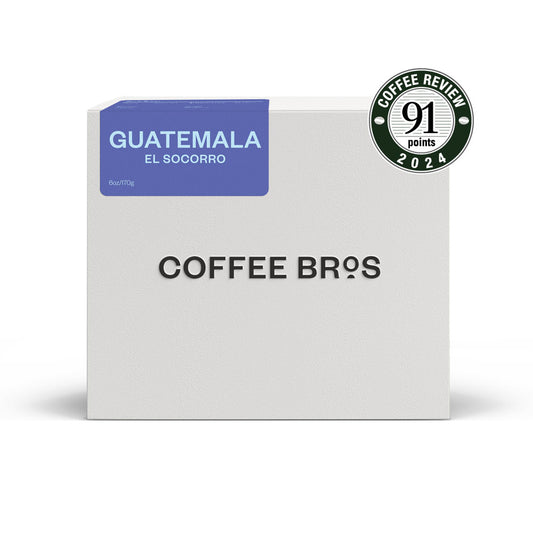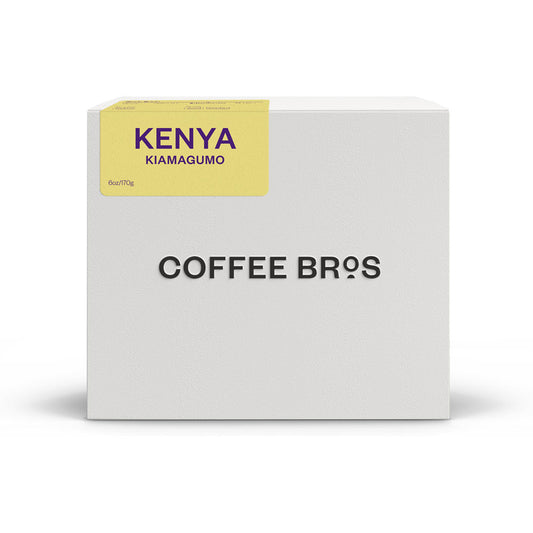Collection: Espresso Roast Coffee
-
Best Seller
Espresso Roast Coffee
A balanced and naturally sweet espresso - great for straight espresso or smaller milk-based drinks
A balanced and naturally sweet espresso - great...
Regular price From $10.29Regular priceUnit price / per -
Best Seller
Dark Espresso Roast Coffee
A bold and far from bitter espresso, chocolatey, heavy body, and perfect for milk-based drinks
A bold and far from bitter espresso, chocolatey...
Regular price From $9.79Regular priceUnit price / per -
Dark Roast Coffee
A traditional-tasting dark roast but roasted slightly lighter to better highlight terroir
A traditional-tasting dark roast but roasted sl...
Regular price From $9.79Regular priceUnit price / per -
Best Seller
Costa Rican | Las Lajas | Natural
An exceptionally well-balanced coffee with winey fruit and chocolate notes
An exceptionally well-balanced coffee with wine...
Regular price From $13.40Regular priceUnit price / per -
Sold out
Honduras | Katia Duke | Natural
A beautiful Honduran coffee with notes of Chocolate, Orange, and Red Currant
A beautiful Honduran coffee with notes of Choco...
Regular price From $11.85Regular priceUnit price / per
Looking for something extraordinary? We've got a selection of unique coffees from different roast types to origins. Use the selection below to find your match!
Shop All Coffee
-
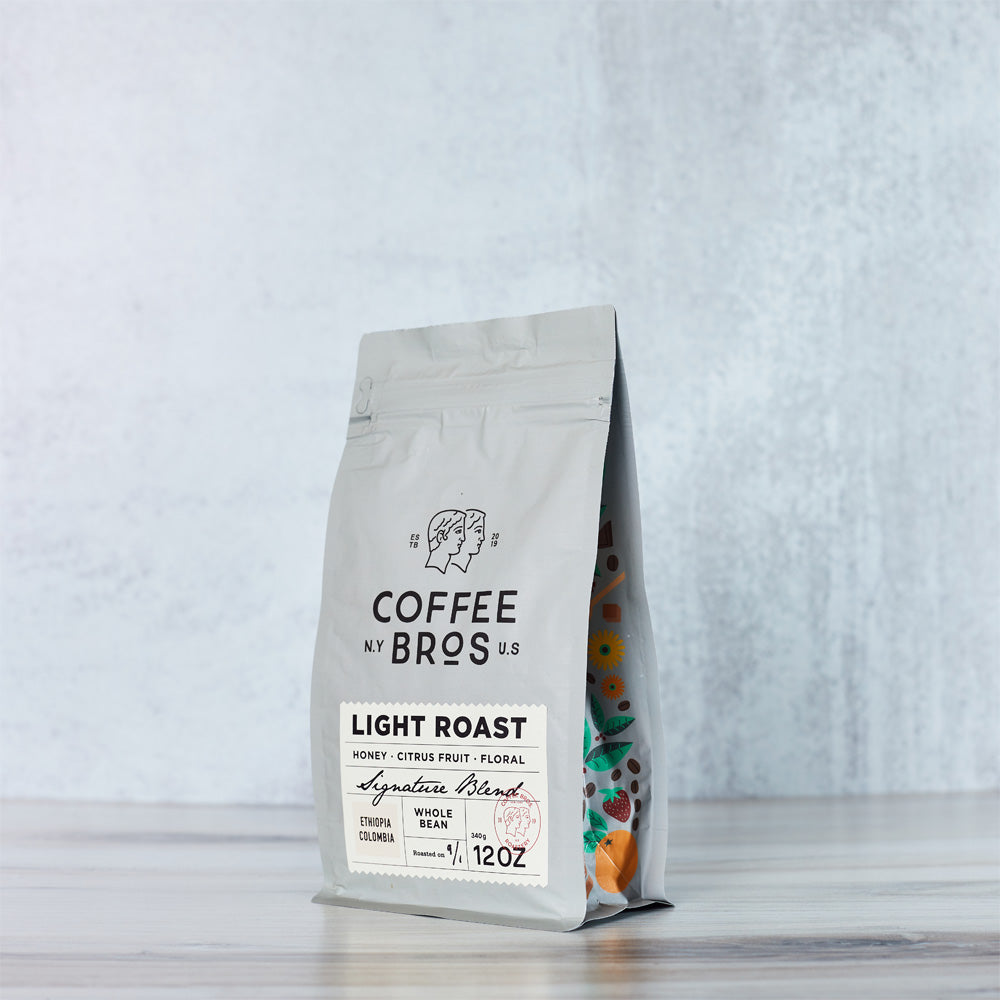
Light Roast Coffee
Roasted to highlight the terroir of specific, high-altitude coffee-growing regions and processing...
-

Medium Roast Coffee
Our medium roast coffees are rich and smooth, roasted to highlight subtle...
-
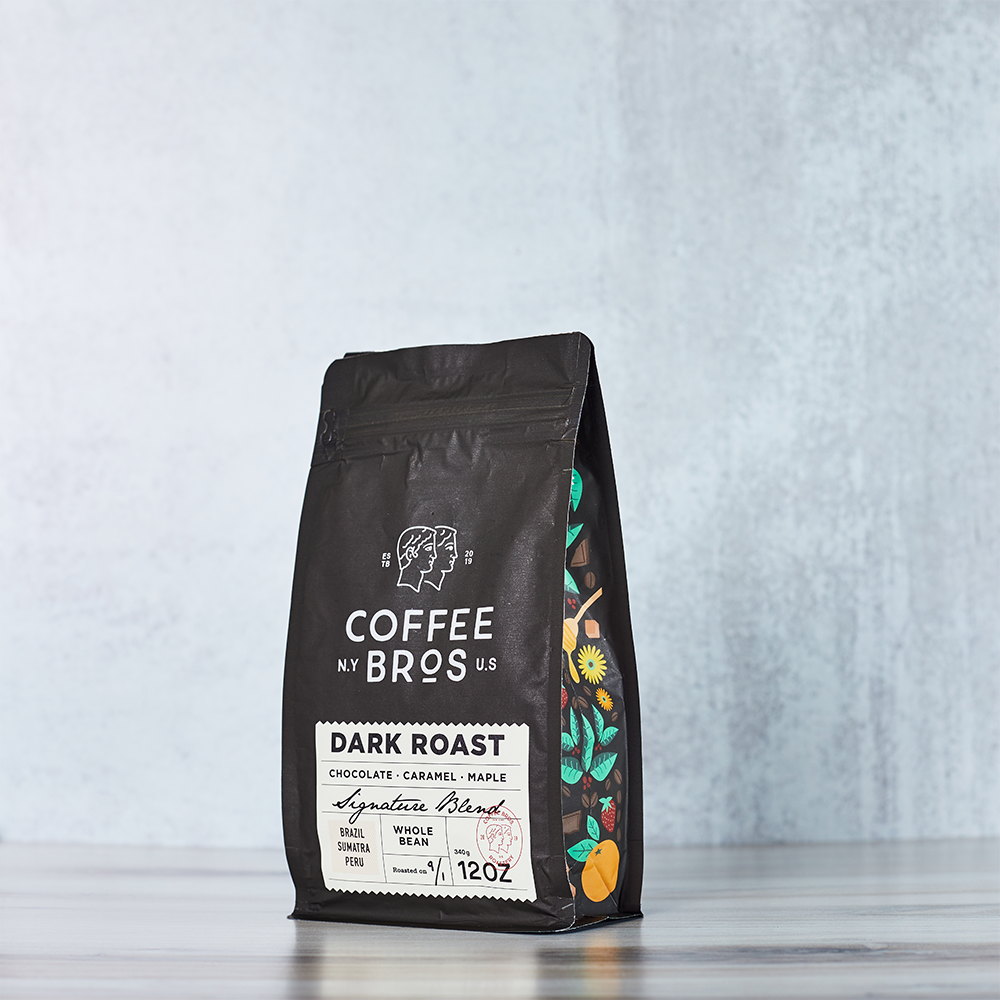
Dark Roast Coffee
Our classic dark roast coffees are roasted lighter to bring out the...
-

Espresso Roast Coffee
Before launching our Coffee Bros. brand in early 2018, we made a...
Shop Single Origin Coffee
View all-
Best Seller
Ethiopia | Daye Bensa | Natural
A crisp and clean light roast with brilliant fruit-forward notes from our friends at Daye Bensa
A crisp and clean light roast with brilliant fr...
Regular price From $12.85Regular priceUnit price / per -
Best Seller
Costa Rican | Las Lajas | Natural
An exceptionally well-balanced coffee with winey fruit and chocolate notes
An exceptionally well-balanced coffee with wine...
Regular price From $13.40Regular priceUnit price / per -
New
Colombia | La Mina | Natural
A well-balanced honey coffee that works exceptionally well as an espresso
A well-balanced honey coffee that works excepti...
Regular price From $12.89Regular priceUnit price / per -
New
Colombia | Honey Medina | Caturro Honey
A well-balanced honey coffee that works exceptionally well as an espresso
A well-balanced honey coffee that works excepti...
Regular price From $12.89Regular priceUnit price / per$26.99Sale price From $12.89Sale -
New
Colombia | Filadelfia Honey | Honey Fermentation
A well-balanced honey coffee that works exceptionally well as an espresso
A well-balanced honey coffee that works excepti...
Regular price From $15.99Regular priceUnit price / per -
New
Guatemala | El Socorro | Pacamara Natural
A crisp and clean light roast with brilliant fruit-forward notes from our friends at Daye Bensa
A crisp and clean light roast with brilliant fr...
Regular price From $12.89Regular priceUnit price / per -
Kenya AA | Kirinyaga | Washed
An adventurous coffee with notes of plum, cocoa, and lemon
An adventurous coffee with notes of plum, cocoa...
Regular price From $12.89Regular priceUnit price / per -
Kenya Peaberry | Kiamagumo | Washed
An adventurous coffee with notes of plum, cocoa, and lemon
An adventurous coffee with notes of plum, cocoa...
Regular price From $12.89Regular priceUnit price / per
Additional Reading: Espresso Basics
View all-
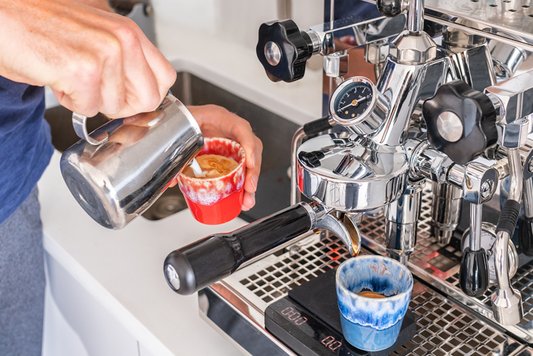
Mastering the Art of Espresso: The Role of Timi...
Mastering the Art of Espresso: The Role of Timing and Measurement Introduction Mastering the art of brewing a perfect shot of espresso takes practice and patience. There are many factors...
Mastering the Art of Espresso: The Role of Timi...
Mastering the Art of Espresso: The Role of Timing and Measurement Introduction Mastering the art of brewing a perfect shot of espresso takes practice and patience. There are many factors...
Espresso 101
What are Espresso brew ratios?
Espresso brew ratios are the number of coffee grounds used versus the final extraction yield or liquid in your cup.
For example, a double espresso calls for a 1:2 ratio, meaning that for every 1 gram of ground coffee in your espresso portafilter, you aim for 2 grams of espresso yield in your cup. A standard double espresso recipe would call for 19 grams of finely ground coffee in your portafilter, yielding 38 grams of espresso in your cup and typically within 30 – 35 seconds.
Want to know the best espresso to milk ratios for any milk-based espresso beverage? See our Espresso Drink calculator!
How do you make a single shot of espresso?
Using a single basket, finely grind 7 - 9 grams of coffee, distribute the grounds evenly, tamp with 30lbs of pressure, then extract 14 - 18 grams of espresso at a 1:2 ratio within 25 – 30 seconds at 201°F.
The temperature of the espresso brew can vary greatly depening on your roast type. Read our guide on the differences between lighter roasted coffees and dark roasted coffees and their ideal brewing temperatures.
How do you make a double shot of espresso?
Using a VST-18 or VST-20 basket, finely grind 19 grams of coffee, distribute the grounds evenly, tamp with 30lbs of pressure, then extract 38 grams of espresso at a 1:2 ratio within 25 – 30 seconds at 201°F.
The temperature of the espresso brew can vary greatly depening on your roast type. Read our guide on the differences between lighter roasted coffees and dark roasted coffees and their ideal brewing temperatures.
What is a ristretto shot?
A ristretto shot, also known as a restricted shot, is characterized by a brew ratio between 1:1 and 1:1.5
*See the espresso brew ratios question to better understand what a 1:1 and 1:1.5 might mean
What is a normale espresso shot?
A normale shot, also known as a standard shot, typically features a brew ratio between 1:2 and 1:3. Using a higher ratio can result in a clearer espresso and a higher percentage of extraction.
*See the espresso brew ratios question to better understand what a 1:1 and 1:1.5 might mean
What is a lungo espresso shot?
A lungo is a larger espresso shot that is pulled for a longer period of time, resulting in a cup that is twice the size of a regular espresso shot. The ratio of coffee to water in a lungo is typically between 1:3 and 1:4, and this may vary depending on the barista or home brewer's personal taste preference.
*See the espresso brew ratios question to better understand what a 1:1 and 1:1.5 might mean
How to best prepare and extract an espresso shot?
The espresso shot preparation and extraction stages include knowing your brew ratio, dosing your coffee, distributing the grounds, tamping with even and consistent pressure, and finally brewing the espresso and stopping it at the intended total brew time. You would repeat this process as part of the “dialing in” of the espresso to ensure that it hits on the intended recipe or taste notes.
Knowing your brew ratio: The brew ratio determines how much coffee grounds go into your portafilter to the total espresso yield in your cup. Standard brew ratios range from 1:1, 1:1.5, 1:2, 1:3, 1:4, and everything in between. Your brew ratio is usually determined by the type of drink you intend to make; for example, a standard ristretto espresso will follow a 1:1 brew ratio.
Dosing your coffee: Now that you have your brew ratio and drink type, you will finely grind your coffee directly into your portafilter. Let’s say you are brewing a double shot espresso (1:2 ratio); you should expect the total ground coffee to equal 18 – 20 grams.
Dosing your coffee also refers to correctly choosing your grind size, as your grind size will significantly impact your extraction yield and shot time. A coffee that extracts too quickly (keeping your tamping pressure the same per shot) means you are under-extracting your espresso shot and need to grind finer. This trial and error step is called “dialing in” your espresso.
Distributing your grounds: Once the coffee is ground in your portafilter, you need to spread the coffee evenly before tamping, which helps prevent channeling (when water penetrates the coffee puck unbalanced).
A great way to evenly distribute your coffee grounds and break apart any clumps of grounds is through a WDT tool. A WDT tool will help keep your espresso shot uniform, improve channelling, and increase total extraction quality.
Tamping: After evenly distributing your coffee, it is time to tamp. Tamping is the one step that most overthink and should also be the most consistent of all the steps. As coffee ages, grind size and total brew time might change, but your tamping pressure will always remain the same.
The critical factors for the perfect tamp are keeping the portafilter level and tamping at a consistent 30lbs of pressure. Recall that channeling can significantly impact espresso extraction in the distributing your grounds step, which is why tamping should remain level and with consistent pressure.
Brewing your espresso: You made it! It is time to brew your espresso. It would have taken you longer to read these five steps than the time it takes to brew and extract an espresso shot. While brewing your shot, you monitor total brew time and weight to ensure it hits on your intended brew recipe. If your espresso brews too fast, consider altering your dosing and distribution steps. Remember, tamping should remain consistent and not be a factor that needs to be changed to adjust your brew.
Finally, the most important factor is how the coffee tastes. If your recipe calls for a 1:2 ratio and to brew within 25 seconds, yet you brew in 32 seconds, and it tastes delicious, stick to 32 seconds!
See our full guide on Chasing the Perfect Espresso shot here.
How to brew a lighter-roasted espresso?
We love Light Roasted Coffees as espresso but know they will be very bright, acidic, and sweet. You can certainly add milk to a lightly roasted espresso drink, but the coffee will get lost in anything above a 1:1 ratio (40g espresso shot to 40g of milk).
There are a few ways of approaching a light-roasted coffee as an espresso.
- Brew the light roast as a “lungo” which can range from a 1:3 and 1:4 ratio of espresso grounds to brew liquid. Try a light roasted espresso with 20 grams of ground coffee to 60 grams of liquid for a cleaner cup with high clarity.
- Brew your light roast at a higher temperature ranging from 93 – 96 degrees Celsius. Brewing your light roast at higher temperatures will also improve cup quality, and aromatics, and help combat the natural acidity of a lightly roasted coffee. You can certainly try brewing a lightly roasted coffee as a “normale” but we still prefer a “lungo” shot.
- When adding milk to your light-roasted espresso, keep your espresso-to-milk ratio no higher than 1:1 as light-roasted coffees get easily lost in milk.
How to brew a darker-roasted espresso?
The key to a delicious dark-roasted espresso is all about temperature. Try brewing your dark roast at cooler temperatures ranging from 87 – 90 degrees Celsius and even cooler if your machine has the capability of doing so.
Dark roasted coffees can quickly become harsh and astringent when brewing at “normal” or higher temperatures which is why we suggest brewing at lower temperatures.
Further, darker-roasted coffees make phenomenal milk-based beverages like lattes and cappuccinos. If you are looking for an espresso roast that works well with milk, lean toward medium to darker roasted coffees.
What is your suggested recipe for a latte?
We recommend using a 20g double shot of espresso at a 1:2 ratio resulting in 40g (1.4 ounces) of espresso extraction. We will top off our espresso with 230 – 240g (8.1 ounces) of milk resulting in a 9.5 – 9.9 ounce latte!
You can use our milk-to-espresso drink calculator to adjust these ratios for a more or less rich latte.
What is your suggested recipe for a cappuccino?
We recommend using a 20g double shot of espresso at a 1:2 ratio resulting in 40g (1.4 ounces) of espresso extraction. We will top off our espresso with 100g (3.5 ounces) of milk resulting in a perfect 5-ounce cappuccino!
You can use our milk-to-espresso drink calculator to adjust these ratios for a more or less rich latte.
What is your suggested recipe for a cortado?
We recommend using a 20g double shot of espresso at a 1:2 ratio resulting in 40g (1.4 ounces) of espresso extraction. We will top off our espresso with 55g (2.0
ounces) of milk resulting in a perfect 3.4-ounce cortado!
You can use our milk-to-espresso drink calculator to adjust these ratios for a more or less rich latte.
What is your suggested recipe for a macchiato?
We recommend using a 20g double shot of espresso at a 1:2 ratio resulting in 40g (1.4 ounces) of espresso extraction. We will top off our espresso with 25g (0.88 ounces) of milk resulting in a perfect 2.3-ounce macchiato!
You can use our milk-to-espresso drink calculator to adjust these ratios for a more or less rich latte.
- Choosing a selection results in a full page refresh.


